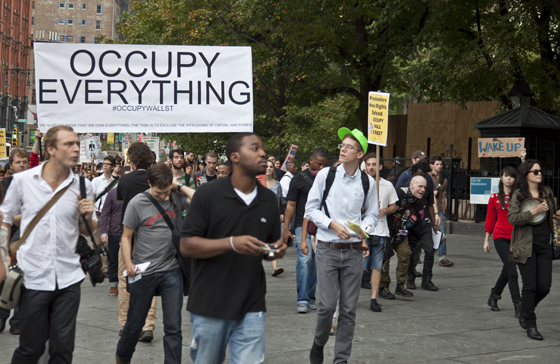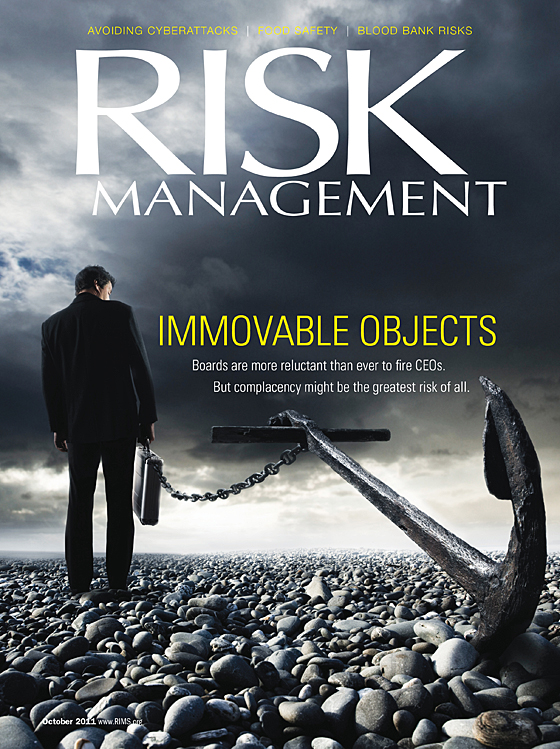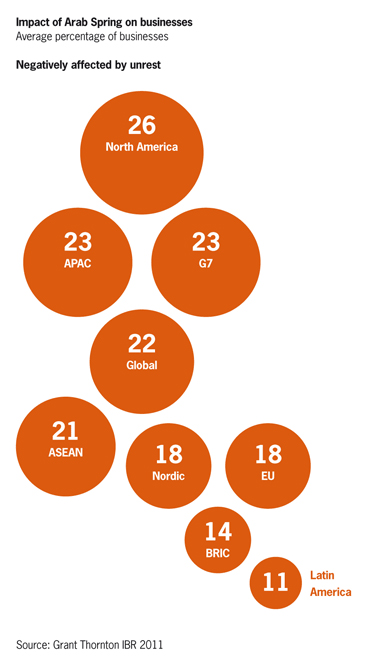The Occupy Wall Street movement going on in Manhattan’s Financial District and the Occupy [Insert City Name] protests it has spawned nationwide are rooted in the 2008 economic meltdown and subsequent government bailouts. Those were of course spawned by terribly flawed business practices of financial firms, perhaps most notably the “sure, I’ll insure that” stance taken by AIG. And as we all know, horrible risk management was a big part of that what led to the preceding years of flawed, reckless corporate behavior.
Now, people are cheesed off. They are not a monolithic group and have many other gripes about the environment, government spending, wealth distribution and so forth. But much of it certainly has to do with the collapse. The fact that the unemployment rate has been hovering just shy of 10% for more than two years certainly is the subtext for the rationale behind the why they are there and where they are.
And it doesn’t look like it will end anytime soon.
The mainstream press is just starting to cover this now, so many are still understandably in the dark about what is going on. Fortunately, Mother Jones has cataloged the happenings of the past few months in a nice little time line of the evolution of the Occupy Wall Street movement.
Read this to catch up and head over to the Mother Jones site to check out their map of the protest locations and an interesting infographic about income disparity.
- July 13: The Canadian magazine Adbusters makes a call to Occupy Wall Street.
- August 30: The hacktivist collective known as Anonymous releases a video answering the call and encouraging others to follow suit.
- September 17: Nearly 1,000 gather to protest corporate greed and begin occupying the financial district in New York City.
- September 19: Roseanne Barr is the first celebrity to lend support to the so-called NYC General Assembly.
- September 20: The NYPD starts arresting protestors for wearing masks, citing an arcane law that prohibits masked gatherings of two or more people with an exception: “a masquerade party or like entertainment.” The police soon become more forceful.
- September 22: Demonstrators interrupt a Sotheby’s Auction, “in a show of solidarity with the art handler’s union that had been locked out.” This is the first instance of labor unions and the movement locking step.
- September 24: 80 protestors are arrested during a peaceful march; a video of a police officer pepper-spraying a nonthreatening woman goes viral.
- September 26: Anonymous allegedly leaks the name and details of the police officer who wielded the pepper spray.
- September 27: The Occupy Wall Street campaign comes out in support of postal workers who are protesting their reduced five-day work week.
- September 28: Transport Workers Union votes to support Occupy Wall Street; over 700 Continental and United Airline pilots demonstrate in front of Wall Street.
- September 30: More than 1,000 demonstrators march on NYPD headquarters, protesting the police response against the demonstrators.
- October 1: Over 700 demonstrators are arrested for marching across the Brooklyn Bridge and blocking traffic.
- October 5: Major labor unions endorse the movement and join in a march on New York’s financial district.




